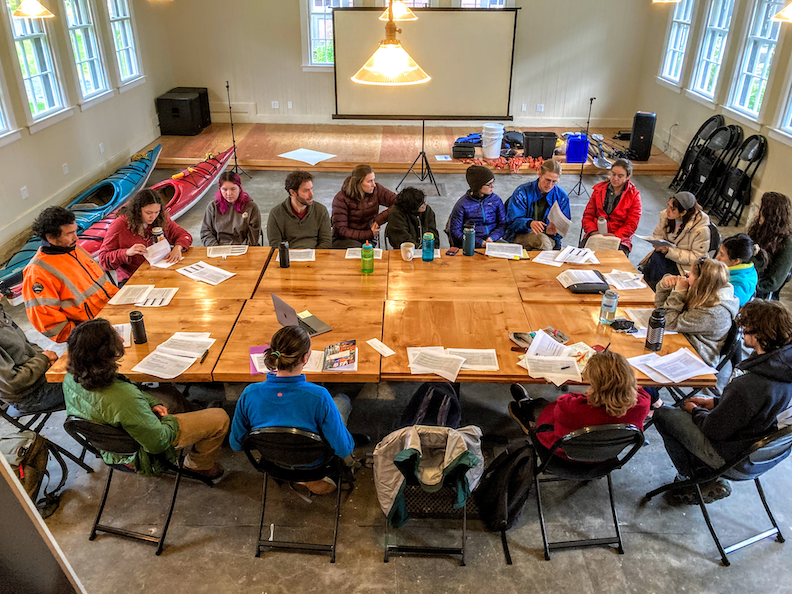In 1986, two linguists, Ron Scollon and Susie Scollon, collaborated with Tlingit scholars Nora Dauenhauer and Richard Dauenhauer to develop a new type of education. Drafted a proposal to Sealaska Cultural Heritage Foundation. It was an education that prioritized building knowledge about where you live, the cultures you interact with, and the communication skills needed to connect with each other and thrive in a media-saturated world.of ax handle academynever became a so-called physical school, but its curriculum and values live on in the minds of educators as a vision of place-based education that is directly relevant to the lives we lead.
Nearly 70 years ago, an entrepreneur named LL Nunn founded a small, unconventional two-year college on his ranch in eastern California that would provide students with a liberal arts education while building tools for self-sufficiency and “service.” decided to establish. To humanity. ” The university is deep springsremains in existence, and the three-pillar model of academics, labor, and autonomy has taken root in other institutions across the country.
i am executive director outer coast, a small, emerging two-year liberal arts college located on the Sitka Fine Arts Camp/Historic Sheldon Jackson Campus in Sitka. Inspired in part by Ax Handle Academy, in part by Deep Springs, and most importantly by the location, language, and culture of Sitka and the Southeast, Outer Coast is a vision of what higher education is like in Alaska. , founded to reimagine who it serves. .
Over the past several years, our team has made steady progress toward our long-held goal of establishing a new university in Alaska while providing college credit-earning opportunities for both Alaskan and non-Alaska students. We have been running summer seminars and post-secondary academic year programs. We are now at a critical turning point. The first class of undergraduate students will enroll at Outer Coast in fall 2024. (Still accepting applications) application The 20 students who make up our founding class come from communities across Alaska and around the world. )
In Alaska, lowest The nation's four-year college graduation and college enrollment rates are dismal compared to other states, especially for low-income students, rural students, and Alaska Natives. At the same time, higher education across the country is in an endless crisis. Tuition costs are rising, universities are being run like businesses (often at the expense of the communities in which they are located), and the university job market is getting worse. Precarious, a significant number of the country's highest-achieving students feel they have neither the obligation nor the ability to make meaningful change in the world, and a high-paying career in finance, management consulting, big tech, etc. He dropped out of university to pursue a career in .
Outer Coast seeks to challenge these prevailing norms. We are building an institution that gives curious young people the opportunity to invest in the growth of themselves and the communities around them at the same time. By prioritizing affordability, we want to reach students who cannot afford higher education, especially those in Alaska. And unlike college, where each student is one of hundreds in an auditorium or a small square on a screen, life on the Outer Coast is intimate and deeply communal.
Our curriculum features a wide range of interdisciplinary seminars based on the study and practice of Sitka and Southeast Alaska's Native American traditions. Students are responsible for undertaking independent service, admitting prospective students, hiring faculty, and making other important decisions for the institution through collective governance.
On a recent Thursday, students might leave a class discussion on intertidal ecology and head to a committee meeting to discuss applications from faculty candidates. In the afternoon, one student might walk down the street to the Sitka Sound Science Center's salmon hatchery for a volunteer shift, while another might take command of the kitchen and make jars of jam for the town's elderly. Their dinner conversation is peppered with Tlingit phrases they've been practicing in class. A student is actively recruiting participants for a Dostoyevsky reading group. Some others are scrolling through Raven Radio's community calendar and making plans for the weekend. In the evening, the braver ones venture out to the rocky beaches just a step away from campus to jump into the cold water.
During their two years at Outer Coast, undergraduates earn college credits toward an associate's degree. After graduation, our students are in a favorable position to transfer to another her four-year university in a lower ranking position to obtain a bachelor's degree.
“Outer Coast is a place where scholars can be informed by your personal experiences. The drive to think the things you want to think and solve the problems you want to solve is rooted in your lived experiences and life decisions.” ” said Ferri, a student who participated in the Outer Coast Year program last fall. “Outer Coast was very formative in forming connections between the academic and the just human.”
All of our work at Outercoast is driven by two beliefs. The first is that education should start where you are: the body you are in, the people you interact with, the ecosystem you live in, the history that surrounds you. Second, a true community is one in which every individual is responsible for everyone else. Every student, no matter who they are, brings an essential gift to their peers, our institution, and our community. With these beliefs in mind, Outer Coast can serve as a model for what a university can and should be, something that other schools and other settings can emulate. At the end of Outer Coast Education, we want our students to understand two of life's important questions: “Where am I in this world?” . And what is my responsibility to this world? — Can only be answered together.
Get the morning headlines delivered to your inbox


